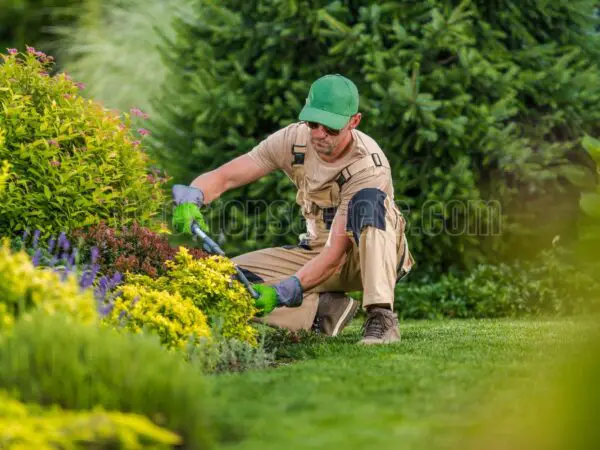Are you tired of barren patches in your yard? Dreaming of a lush green lawn? Plant grass effortlessly with our expert tips and transform your outdoor space into a vibrant oasis. Discover the secrets to achieving a healthy, thriving lawn that will be the envy of your neighborhood. Say goodbye to dull landscapes and hello to a verdant paradise right outside your door. Join us as we delve into the world of planting grass, seed and water, and unlock the potential of your garden.
Key Takeaways
- Prepare Thoroughly: Before planting grass seed, ensure the soil is well-prepared by clearing debris and weeds to provide a healthy environment for new growth.
- Select Wisely: Choose the right grass seed based on your climate, soil type, and intended use to ensure successful growth and a lush lawn.
- Follow Proper Steps: When planting grass seed, follow the recommended steps such as seeding at the correct depth, watering adequately, and protecting the area from birds or pests.
- Provide Aftercare: After planting, focus on proper aftercare like consistent watering, avoiding foot traffic, and mowing at the appropriate height to support healthy grass growth.
- Renovate Strategically: If renovating your lawn, consider factors like soil testing, aeration, and overseeding to revitalize your lawn effectively.
- Regular Maintenance: Maintain your lawn by mowing regularly, fertilizing as needed, and addressing any issues promptly to keep your grass healthy and vibrant.
Before Planting Grass Seed
Soil Preparation Tips
Before planting grass seed, it's crucial to test soil pH to ensure optimal conditions for growth. Remove any weeds or debris from the soil to prevent competition with the new grass. Adequate drainage is essential to prevent waterlogging that can hinder germination.
Selecting Grass Seed
When choosing grass seed, consider the climate in your region to decide between cool-season and warm-season grasses. Check the labels for specific care instructions to ensure proper maintenance. Evaluate factors like sunlight, water availability, and foot traffic to select the most suitable seed.
Understanding Grass Plants
To successfully grow grass from seed, understand the various components of a grass plant. Differentiate between the spreading patterns of creeping and bunch grasses for effective planting strategies. Recognize the significance of each part of the grass plant, including the seed, in its overall growth and development.
Preparing to Plant
Site Preparation Techniques
To ensure successful planting of grass, start by clearing the area of rocks and debris. Level the ground for a smooth seeding surface. Utilize a roller to press seeds into the soil, aiding germination.
Reading Seed Labels
When selecting grass seed, check the germination rate information on labels. Assess the weed seed percentage in the mix. Understand the named variety's significance for optimal results.
Choosing the Right Grass Seed
Warm-Season Grasses
Warm-season grasses, such as Bermuda and Zoysia, thrive in hot climates. They are ideal for regions with scorching summers. These grasses boast traits like drought tolerance and excellent heat resistance. Consider warm-season grasses if you live in an area with intense summer temperatures.
Cool-Season Grasses
Kentucky bluegrass and ryegrass are popular cool-season grass varieties. These grasses excel in cold climates, enduring freezing winter temperatures. Their ability to withstand harsh winters makes them perfect for regions with chilly weather conditions. Consider cool-season grasses if you live in an area with cold winters.
Seed Blends and Mixes
Seed blends offer a mix of different grass species tailored to specific needs. They combine the best qualities of various grass types, providing a diverse and resilient lawn. When choosing seed blends or mixes, consider regional factors like climate and soil conditions. This ensures that your grass thrives in its environment.
Planting Grass Seed Steps
New Lawn Seeding
To start a new lawn, prepare the ground by removing debris and loosening the soil for better seed contact. Next, plant grass seed evenly across the area to ensure uniform coverage. After seeding, water adequately to promote germination.
Overseeding Lawns
Overseeding offers benefits like thickening existing lawns and filling in bare patches. Choose the right time of year for overseeding based on your grass type and climate. Before overseeding, mow the lawn short to allow better seed-to-soil contact.
Repairing Bare Spots
Identify why bare spots occur, such as heavy foot traffic or pet damage. Select appropriate grass seed mixes that match your existing lawn for seamless integration. Ensure to keep the repaired areas moist by watering regularly to support healthy grass growth.
Aftercare for New Grass
Watering Guidelines
Newly seeded lawns should be watered lightly and frequently to ensure proper germination. Avoid the common mistake of overwatering, which can lead to waterlogging and hinder grass growth. It is essential to adjust the watering frequency based on the specific weather conditions in your area.
Regularly check for signs of germination in the newly seeded areas to track the progress of your grass. Monitoring grass growth is crucial to detect any early signs of stress or disease. By observing growth patterns, you can make informed decisions on adjusting maintenance practices accordingly.
Monitoring Growth
To maintain a healthy lawn, it is important to set the mower blade at the correct height for the type of grass you have planted. Following the one-third rule when mowing helps in preserving grass health by avoiding shock and stress. regularly sharpening mower blades ensures clean cuts, promoting optimal grass growth.
Lawn Renovation Tips
Renovate or Reseed
Consider renovating the lawn if it has extensive damage. Assess the lawn's condition to determine if complete reseeding is necessary. Plan the renovation or reseeding process based on the grass type and the current season.
If your lawn has significant damage, opt for renovation to rejuvenate its health and appearance. Complete reseeding may be required if the existing grass is sparse or unhealthy. When planning the renovation or reseeding, consider factors like the type of grass that thrives in your region and the optimal time for planting based on the season.
Repair Bare Spots
Address bare spots promptly to prevent weed infestation and promote a lush, uniform lawn. Before seeding bare areas, ensure the soil is loose and well-aerated to facilitate seed germination. Protect newly seeded bare spots from foot traffic by marking them off with stakes or temporary fencing.
To prevent weed growth and maintain a healthy lawn, it's crucial to tackle bare spots as soon as they appear. Loosening the soil in bare areas helps create an ideal environment for new grass seeds to take root and flourish. By protecting freshly seeded spots from foot traffic, you allow the grass to establish strong roots without disturbance.
Maintaining Your Lawn
Watering New Lawns
- Water new lawns deeply to promote deep root growth, aiding in drought resistance and overall lawn health.
- Utilize a sprinkler system to ensure even water distribution across the lawn surface.
- To minimize water loss from evaporation, water early in the morning when temperatures are cooler.
Lawn Maintenance Guide
- Establish a regular maintenance schedule encompassing mowing, watering, and fertilizing to uphold a vibrant lawn.
- Employ effective weed control measures to prevent weed infestations and maintain a lush, green lawn.
- Enhance soil health by aerating the lawn, which reduces soil compaction and fosters robust root development.
Summary
You've learned the essential steps to successfully plant and maintain a lush, healthy lawn. From preparing the soil and choosing the right grass seed to post-planting care and renovation tips, you now have a comprehensive guide to achieve a vibrant lawn. Remember to stay committed to regular maintenance routines to ensure your grass stays green and thriving. By following these guidelines, you'll soon enjoy a beautiful lawn that enhances your outdoor space and adds value to your property.
Now it's time to put your newfound knowledge into action. Get started on planting your grass seed, taking care to follow each step diligently. With patience and dedication, you'll soon be rewarded with a stunning lawn that you can proudly showcase. Your dream of a picturesque green oasis is within reach!
Frequently Asked Questions
Is it necessary to prepare the soil before planting grass seed?
Yes, preparing the soil is crucial for successful grass growth. Clear the area of debris, till the soil to loosen it, and ensure proper drainage for optimal grass seed germination.
What factors should I consider when choosing the right grass seed?
Consider your region's climate, sunlight exposure, soil type, and intended use of the lawn. Choose a grass seed variety that is well-suited to these conditions for a lush and healthy lawn.
How do I properly plant grass seed?
Prepare the soil by raking it smooth, sow the seeds evenly using a spreader or by hand, lightly rake to cover the seeds, and gently water the area. Follow specific instructions on the seed packaging for best results.
What are some aftercare tips for newly planted grass?
Keep the soil consistently moist but not waterlogged, avoid heavy foot traffic on the new grass, and mow only when the grass reaches the recommended height. Proper aftercare will help establish a strong and healthy lawn.
When should I consider renovating my lawn?
Consider lawn renovation if you have bare patches, thinning grass, or weed infestations that cannot be resolved through regular maintenance. Renovation can help rejuvenate your lawn and promote healthy grass growth.
Image Source: Paid image from CANVA




![How to Choose Flowers for Pot Plants: Create a Lush Indoor Oasis [Expert Tips]](https://treestopsecrets.com/wp-content/uploads/2024/05/Flowers-for-Pot-Plants-2-600x450.jpg)